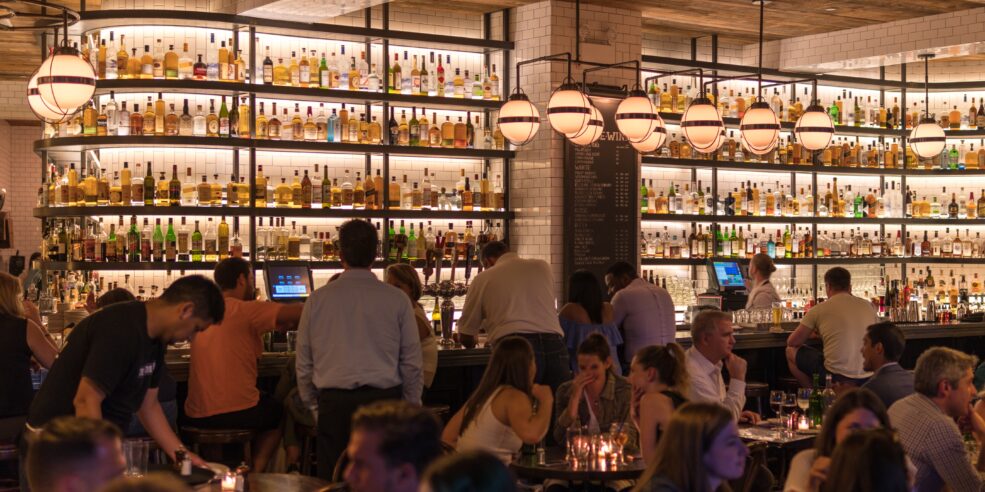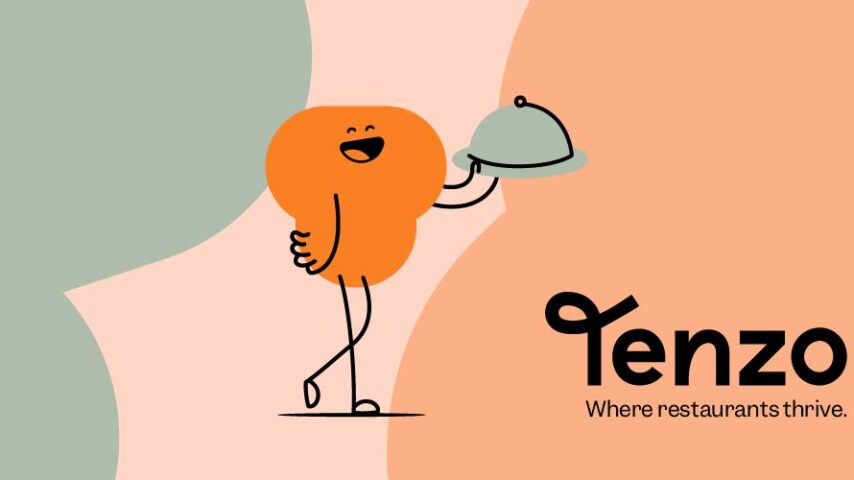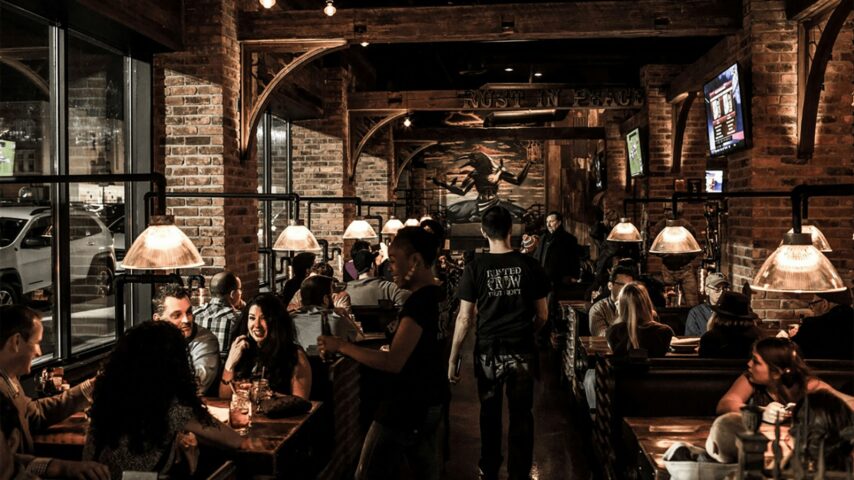By now we all know that the hospitality industry was one of the hardest hit sectors by Covid-19. Over 80% of restaurants had to close their doors in March when the national lockdown was put in place. They were eventually allowed to reopen on July 4th with safety measures in place, including a ‘one-metre plus’ rule for social distancing, but after three and a half months in lockdown, a new problem had arisen. Customers no longer felt confident heading out to eat. To try to kickstart the third largest industry in the UK after months of closure the ‘Eat Out to Help Out’ scheme was put forward by the chancellor. The government would pay 50% of the price of food and soft drinks up to £10 per customer. The scheme would encourage Brits to feel safe going back to restaurants and give a much-needed boost to the industry.
As we look back at the month, we can now say: it was a definite success. According to the government website, 100 million meals had been claimed in throughout the scheme. Bookings in cities became near impossible to get Monday through Wednesday, with more and more people wanting to take advantage of the discount. But just how much did the scheme affect sales numbers after months of negative year-on-year sales growth? Below we break down Tenzo data for the duration of the scheme.
Like-for-like sales soar Monday through Wednesday, but regress at the weekend
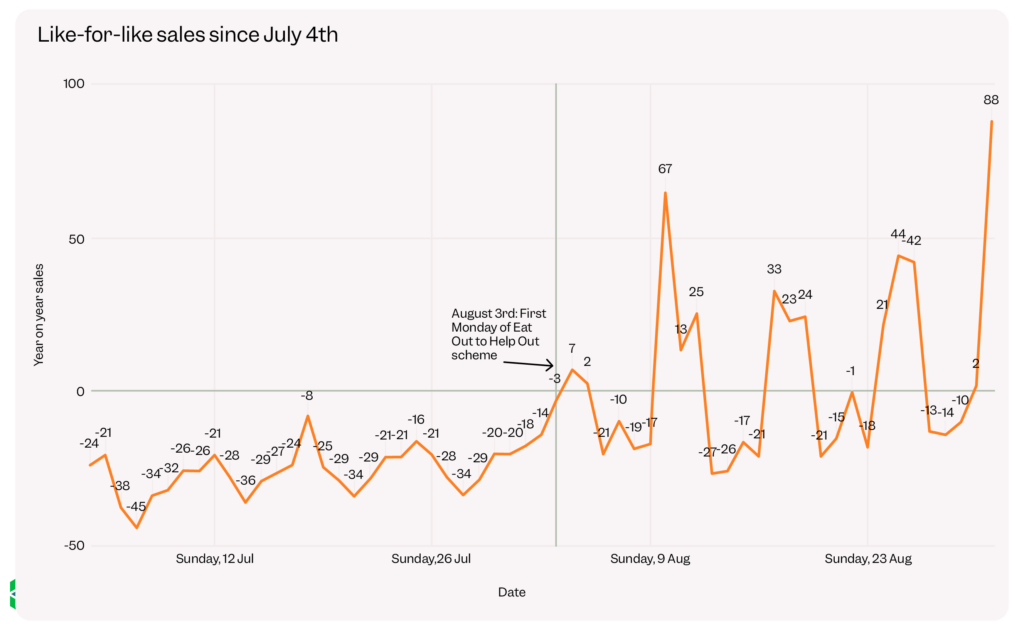
The graph above shows daily like-for-like sales since July 4th, the first day restaurants in England were allowed to reopen for dine-in customers. Throughout the month of July restaurants are operating at an average of -20% year-on-year. However, as the scheme comes into effect in August, sales numbers begin to shoot up Monday through Wednesday. The first week begins gradually with sales showing positive growth for the first time since reopening, but it’s really in week 2 that it all takes off.
The hot weather and a lack of increasing virus cases clearly gave people the confidence to go take advantage of restaurants and newly constructed outdoor seating areas. While sales were still not back to last year’s highs Thursday through Sunday, it’s clear that people got their taste for restaurants back as sales have steadily been increasing over the weekends as well.
Interestingly, sales appear to be up no matter what part of the day you look at, meaning that people working from home have perhaps ventured to have lunch out midweek using the scheme. If we see this trend continue through September this could actually be a replacement for all the business lost in city centres due to continued working from home.
Finally, the last day of the scheme being the Bank Holiday also meant that it ended with a big bang. On average, Tenzo businesses were up 88% as compared to last year, a monumental way to bring everything to a close.
Only 70% of businesses open compared to pre-pandemic times
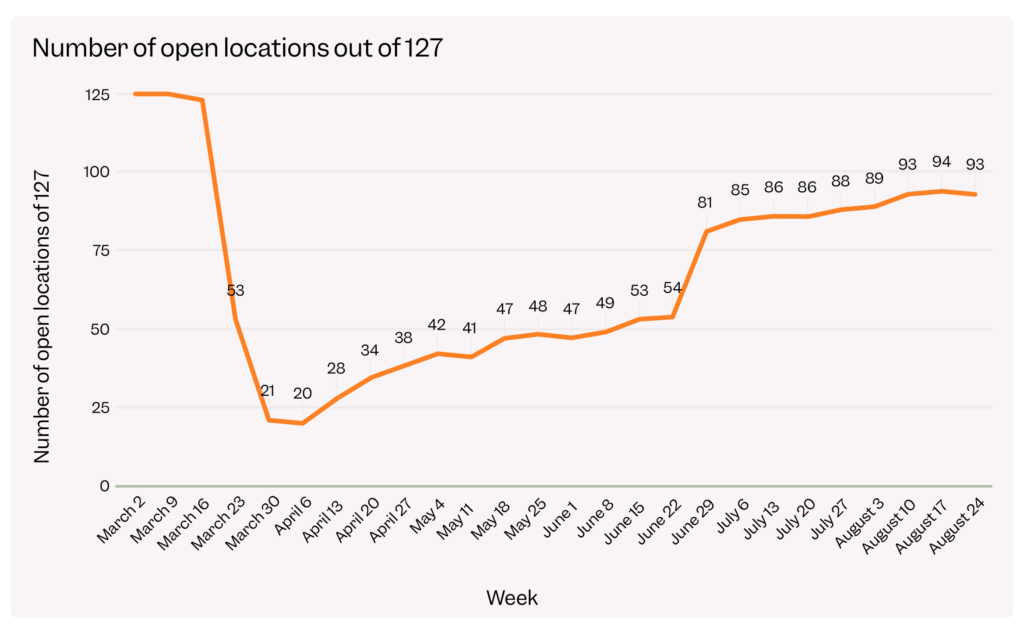
Despite restaurants being allowed to reopen 2 months ago, only 70% of locations have begun trading again since July 4th. While it’s true that some of these outlets have closed permanently, the majority of closed locations belong to groups who are operating most of their restaurants, but who are leaving a select few restaurants closed for the time being. This could be due to severely reduced foot traffic in business centres such as The City in London and a lack of commuters and after work food and drink. It remains to be seen whether these locations open this year or close permanently.
Good news for weekly like-for-like sales
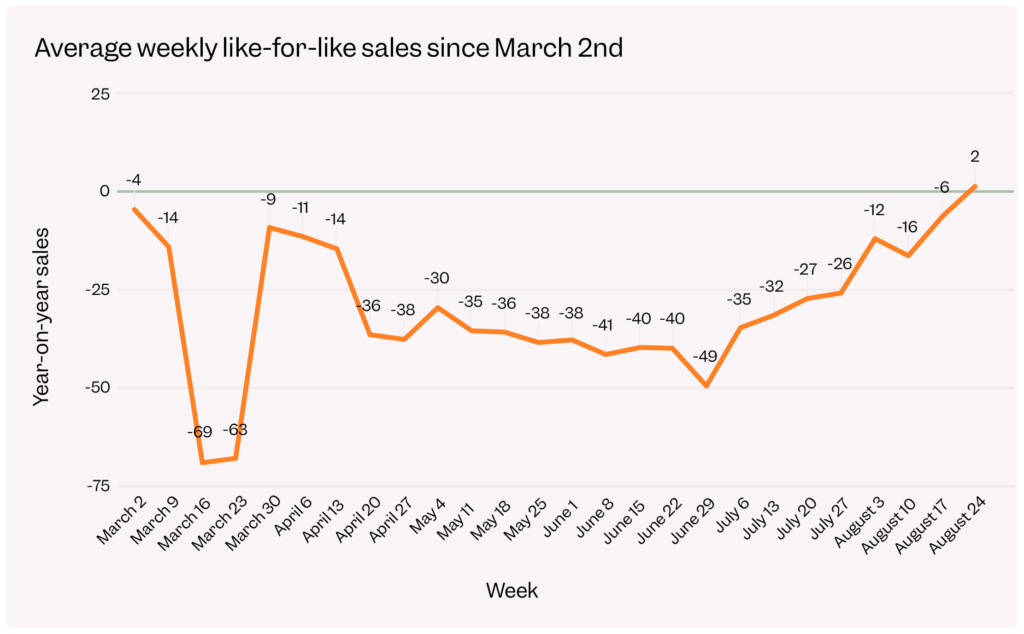
The good news is that the Eat Out to Help Out scheme has pushed weekly industry sales into positive growth for the first time since February, a true mark of success. The numbers for the week of August 24th hover at around 2% year-on-year growth, and hopefully this shows that there is hope yet for the industry to land back on its feet after months of uncertainty.
With the scheme now officially ended, it will be interesting to see how sales continue into September. Will sales fall back to July levels? And how will the businesses who are continuing the scheme on their own dime fare? Needless to say we’re in for a very intriguing September with rent moratoriums up and furlough coming to an end. Check back as we continue to report on data coming in over the next few months.
How have you found the last two months? If you’d like to discuss future plans and your tech stack, feel free to reach out to [email protected].
